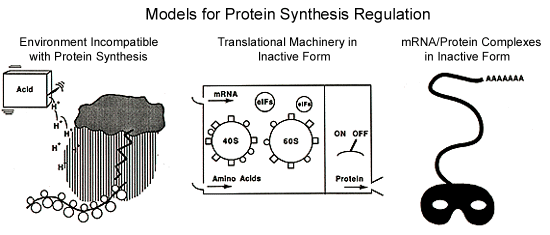
James Grainger
Education
B.A. – University of California Santa Cruz
Ph.D. – University of California Berkeley
Postdoctoral Fellow – University of California San Francisco
Teaching
- BIOL 15 Human Reproduction & Development
- BIOL 24 Cell Biology/ Genetics
- BIOL 115 Human Reproduction & Development
- BIOL 174 Cell Biology L+L
Research
The main focus of my research is to study how the fusion of a sperm and egg initiates the program of development, how activation of the genetic information that is stored in the egg is used during the early stages of development to form the basic cells and tissues in the adult.
The egg itself is a very highly specialized cell, containing the proteins or informational molecules required to begin this program of development. These proteins and informational molecules are stored in the egg in an inactive state. Fertilization triggers their activation and the onset of development. My basic research deals with identifying these informational molecules and the events at fertilization which trigger their activation.
Activation of Stored Maternal mRNAs at Fertilization

Publications
Grainger, J.L., Trumpbour, V.M. and Corbett, A.C. (1999) Activation of protein kinase C is sufficient to unmask sea urchin egg mRNPs. Journal of Cell Biology (Manuscript in preparation).
Grainger, J.L., Scott, N.E., Brown, C.E., Arndt, M., and Dawson, G. (1999) Reversal of the intracellular pH increase at fertilization reactivates ERK1 kinase and arrests cell division in zygotes. Developmental Biology (Manuscript in Preparation)
Calzone F.J., Grainger J., Coffman J.A., and Davidson E.H. (1997) Extensive maternal representation of DNA-binding proteins that interact with regulatory target sites of the Strongylocentrotus purpuratus CyIIIa gene. Mol Mar Biol Biotechnol ., 6(2), p. 79-83
Rees, B.L., Patton, C. , Grainger, J.L. and D. Epel (1995) Protein Synthesis Increases after Fertilization of Sea Urchin Eggs in the Absence of an Increase in Intracellular pH. Developmental Biology, 169, p.683-698.
Grainger, J.L. "The Unmasking of Maternal mRNA during Oocyte Maturation and Fertilization", In: Genetic Engineering, Principles and Methods, (J.K. Setlow, ed.) Plenum Press (1994) Vol 16, pp. 229-239.
Drawbridge, J., Grainger, J.L. and Winkler, M.M. (1990)Identification and characterization of the poly (A)-binding proteins from the sea urchin: A quantitative analysis. Mol. Cell. Biol., 10, p. 3994-4006.
Kelso-Winemiller, L., Grainger, J.L., Truschel-Peeler, M. and Winkler, M.M. (1990) "Reprogramming Protein Synthesis for Rapid Cell Cycles: A model to explain major patterns of gene expression during early development." In: Developmental Biology, (E.H. Davidson, J.B.Ruderman, and J.W. Posokorny, eds.) UCLA Symposia on Molecular and Cellular Biology. Wiley-Liss, New York. Vol 68, p.47-59.
Grainger, J.L. and Winkler, M.M. (1989) The sea urchin multicatalytic protease: Purification, biochemical analysis, sub-cellular distribution, and relationship to snRNPs. J. Cell Biol., 109, p. 675-683
Grainger, J.L. and Winkler, M.M. (1987) Fertilization triggers the unmasking of sea urchin messenger ribonucleoprotein particles. Mol. Cell. Biol., 7, p.3947-3954
Grainger, J.L., von Brunn, A. and Winkler, M.M. (1986)Transient synthesis of a specific set of proteins during the rapid cleavage phase of sea urchin development. Developmental Biology, 114, p. 403-415.
Winkler, M.M., Steinhardt, R.A., Grainger, J.L. and Minning L. (1980) Dual ionic controls for the activation of protein synthesis at fertilization. Nature, 287, p.558-559.